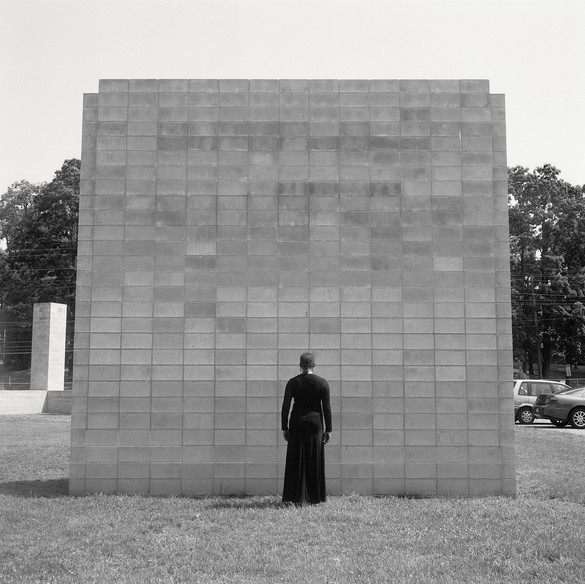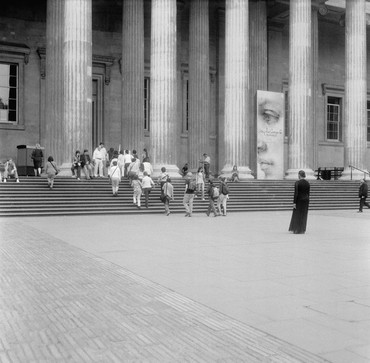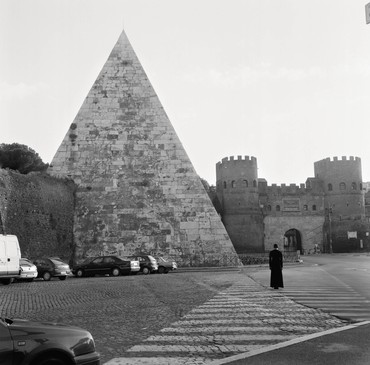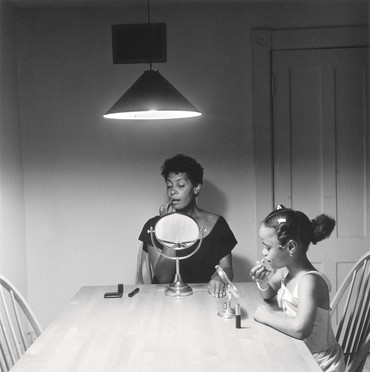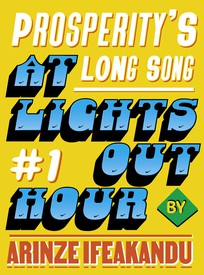
Maya Phillips was born and raised in New York. Her poetry has appeared or is forthcoming in American Literary Review, At Length, the Baffler, boaat, the Gettysburg Review, the New Yorker, the New York Times Magazine, and others. Her second book, Nerd: On Navigating Heroes, Magic, and Fandom in the 21st Century, is forthcoming in the summer of 2022 from Atria Books. Photo: Molly Walsh

Carrie Mae Weems is considered one of the most influential American artists working today. She investigates family relationships, cultural identity, sexism, class, political systems, and the consequences of power. Weems has received numerous awards, grants, and fellowships, including the Prix de Rome, the Alpert, Anonymous was a Woman, and a MacArthur “genius” grant. Photo: Rolex/Audoin Desforges
After Carrie Mae Weems’s Museums Series, 2006–
I’d like to be beautiful
Held by the attention of white walls and yet
I forget the statue of my body the artifact I am
Black and woman my survival is studied
A lesson I relearn every day of my life
I slip into the fabric of morning and already know
how the world will greet me
What a bold shoulder or taut bit
of cloth around the hips will invite in the imagination
Who asks admission into the rooms of my body
Art’s mercy divorces the artist from her image
her body’s exhibition
I’m saying not I but the subject is the woman is not I is the topic of discussion
That is to say I am only me when I’m found
in the mouth of another
What nomenclature will you give all my blackness
all my woman What will I represent
What other thing than the fact of myself
Every other thing than the fact of myself
After Carrie Mae Weems’s Roaming Series, 2006
Have you ever thought how the sight of a woman
wandering faceless in a long dress
always looks like a haunting?
Where can I be both a woman and safe
from the horror of my image?
Through this and more I travel unaccompanied
fearsome—
through the scene and the square frame
Defiant! I am to command
the work’s focus and yet keep myself
private
To demand something of the gaze that makes
and remakes me a woman
I am
and again I am disturbing
the scene
The figure of a woman sharp
in all its weaponry itself
without footnote
I stand over the city over the sea in the middle of the street as though offering my body
as a challenge to the gods
I have never owned my own country
But here in the black and white
landscapes that bow around me I stand
something haunting and extraordinary an
interruption
in a black dress
I make myself known watch me becoming
If this thin slice of a world is all I’m granted
then I’ll keep it
and myself no I
won’t turn around
After Carrie Mae Weems’s Kitchen Table Series, 1990
In the half-light half-lidded my mother
at the table in front of a vanity
mirror She is thorough
in her examination saying
Her dark skin is—
The falling light in the room a pause
in the middle of a sentence
You might call this twilight
if the inside of a room could own
a piece of sky There is something flightless
in my mother who complains of the cracks
in the ceiling powders herself with concealer traces
the suggestion of her eyebrows
with the fine point of a pencil
She holds the tip to the flame
I am afraid of what may mark me
My own skin
blemished and splotchy the tiny black hairs
in an audience on my chin
I shouldn’t have to admit this but
I’d rather a house with no rooms
in which to linger, no interrogation
of what blackness I bring
to the space, whole or half, light or dark—
My mother wakes in the morning
before the sun and in the darkness
flicks the light on above the vanity
she traces she erases
She is often called beautiful
Artwork © Carrie Mae Weems, courtesy the artist and Jack Shainman Gallery, New York
Social Works: Curated by Antwaun Sargent, Gagosian, 555 West 24th Street, New York, June 24–August 13, 2021
The “Social Works” supplement also includes: “Notes on Social Works” by Antwaun Sargent; “Lauren Halsey and Mabel O. Wilson”; “The Archives of Frankie Knuckles: Organized by Theaster Gates”; “Sir David Adjaye OBE”; “Allana Clarke and Zalika Azim”; “Rick Lowe and Walter Hood”; and “Linda Goode Bryant and DeVonn Francis”
